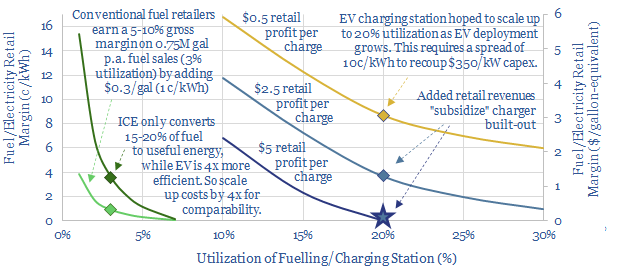
This 14-page note compares the economics of EV charging stations with conventional fuel retail stations. They are fundamentally different. Our main question is whether EV chargers will ultimately get over-built,…
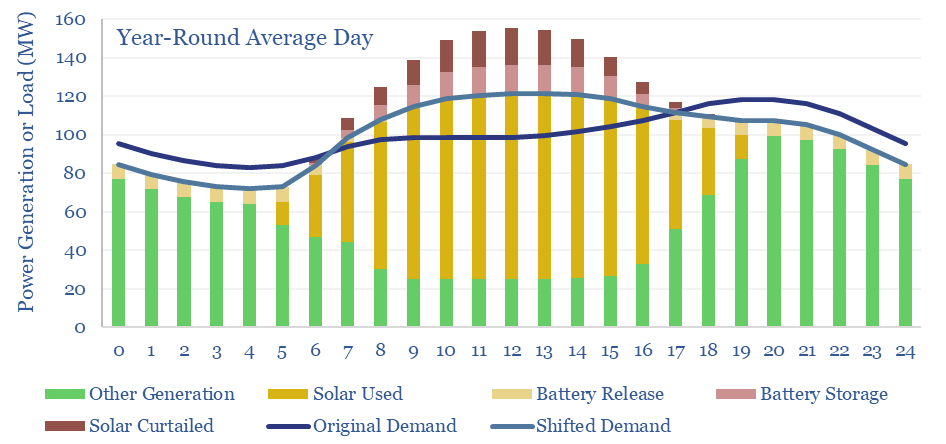
…May, at +/- 15%. And highest at midday in May, when 34MW of excess demand must be absorbed, in our 100MW grid. https://thundersaidenergy.com/2023/07/20/smooth-operators-who-benefits-from-volatile-power-grids EV charging helps to contextualize our demand-shifting…
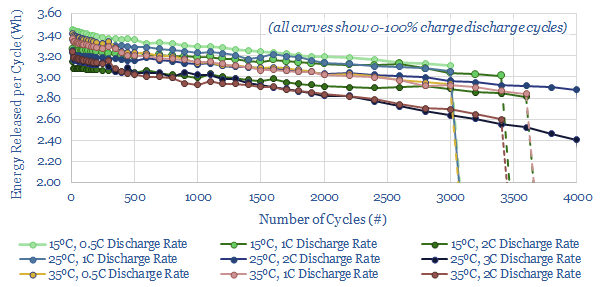
…battery degradation is minimized by limited cycling, slower charging-discharging, stable temperatures and LFP chemistries. $449.00 – Purchase Checkout Added to cart In the underlying laboratory studies that we have assessed, researchers have…
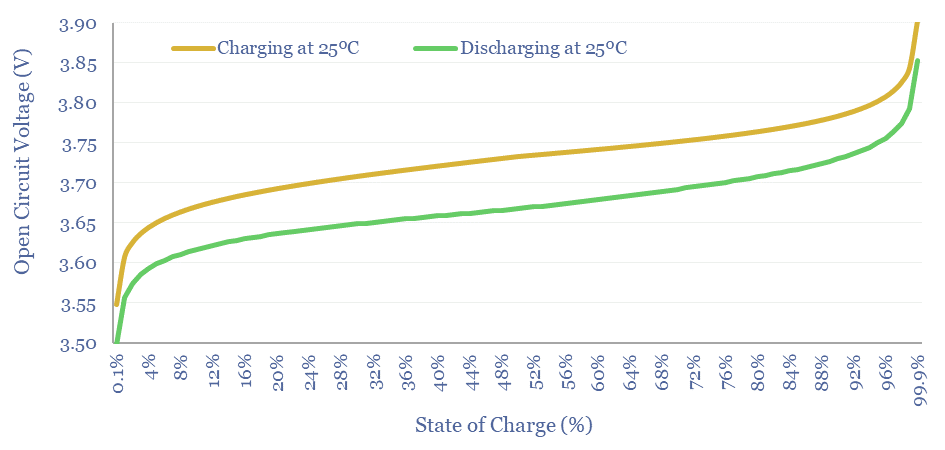
…Charging a battery is simply running this same circuit in reverse. Likewise, electrowinning is an electrical technology used to separate metals from mixtures, such as aluminium, zinc, copper, silver and…
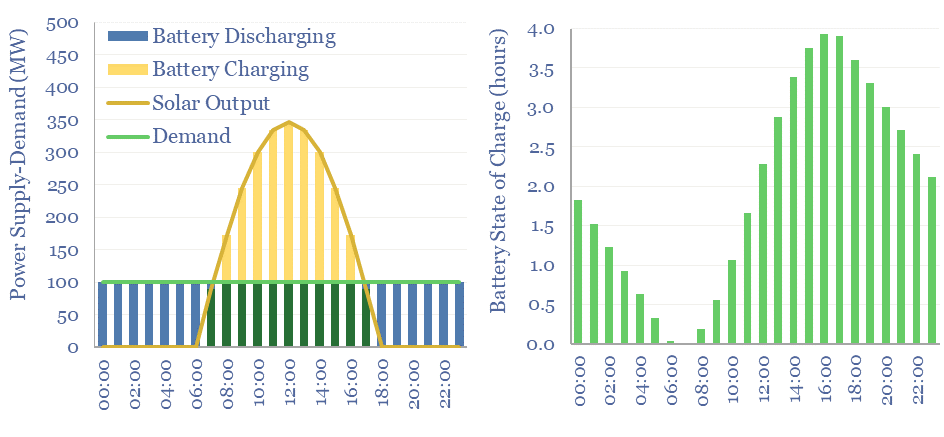
…modules and 3.5MW of lithium ion batteries with daily charging-discharging, in a location where every day is perfectly sunny, with no clouds, and no seasonality, for a total levelized cost…
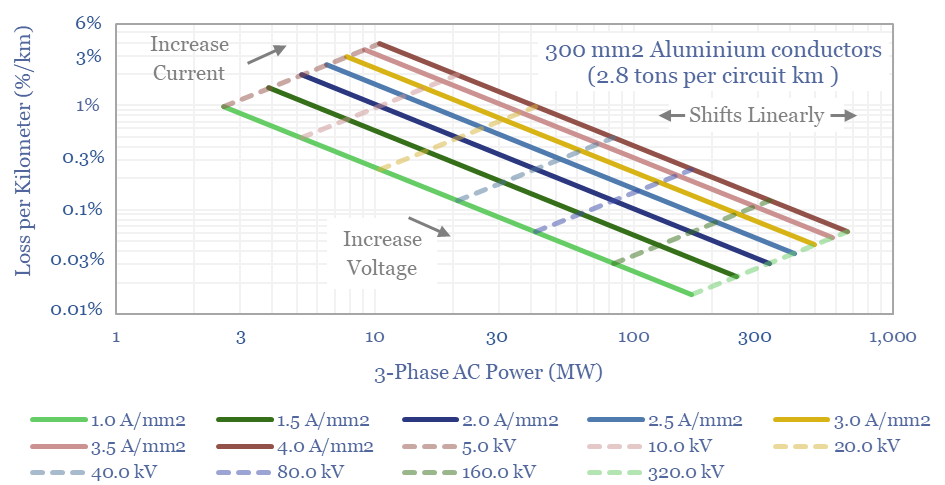
…8MW, weighing 6 tons/km and losing 0.1% in resistive losses each km. A typical EV fast-charger requires 100kg of copper cabling, costing $800 in 2019-20 terms and emitting 5 tons…
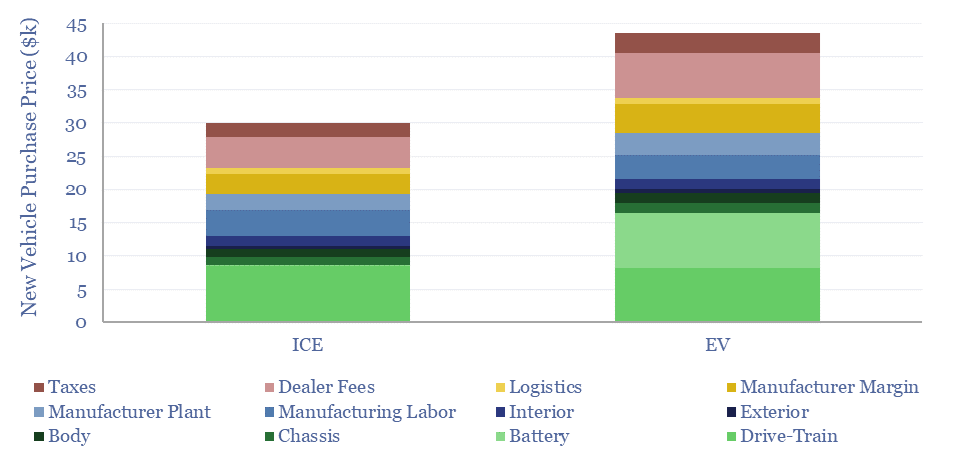
…management system (BMS), power distribution system, electric motors, traction inverter, reduction gear, e-fan, battery cooling plates, coolant heater, high-voltage cables, onboard charger (OBC), DC-DC converter and capacitors (chart below, numbers…

This 14-page note compares the economics of EV charging stations with conventional fuel retail stations. They are fundamentally different. Our main question is whether EV chargers will ultimately get over-built,…
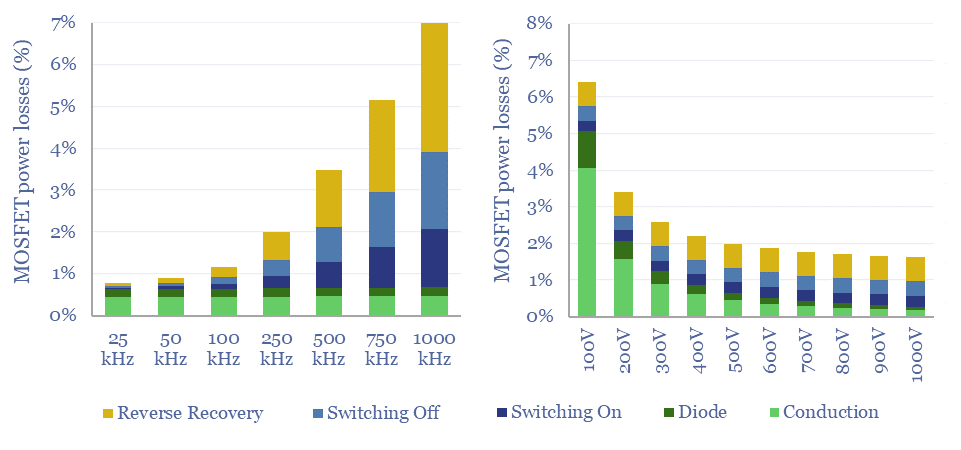
…or layers of MOSFETs and IGBTs (example below). Roughly, flowing power through 6 MOSFETs, each at c2% losses, explains why the EV fast-charging topology depicted below might have losses in…
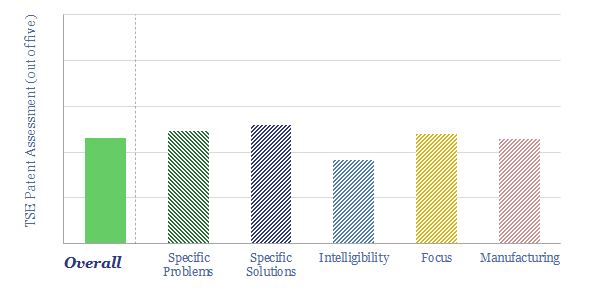
…fuel anode, which metallizes during charging (gain of electrons) and which oxidizes during discharging (loss of electrons). At the air-breathing cathode O2 gas ionizes into the solution during discharging (gain…









